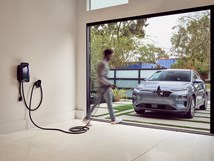Cutting Test Time for Autonomous Driving Systems
Developers of self-driving cars could cut the cost and test miles needed to confirm the safety of self-driving car systems by 99.9%, say researchers at the University of Michigan.
Developers of self-driving cars could cut the cost and test miles needed to confirm the safety of self-driving car systems by 99.9%, say researchers at the University of Michigan. The key, they say, is building simulators that expose such technology only to dangerous driving conditions.
Their idea is to break down threats to safe travel into components that can be simulated, then piece them together. Doing so would mean that 1,000 miles of testing could yield the results of as many as 100 million miles of real-world driving.
The researchers point out that fatal crashes occur only about once in every 100 million miles of real-world driving. Testing robotic driving systems in normal traffic where nothing unusual happens doesn’t contribute to what developers really want to know: How does the system respond when things go wrong?
Zhao and Peng say the goal would be to reach an 80% level of confidence that a robotic vehicle tested with simulations would be 90% safer than cars controlled by human drivers.
The researchers so far have applied their technique to two situations where serious crashes can occur: when an automated vehicle is cut off by a human-driven vehicle, and when it must constantly adapt to the behavior of a leading vehicle driven by a human.
Zhao and Peng say they will expand their evaluations to three more critical driving situations: left turns, street crossings and dealing with oncoming traffic. The duo also aims to develop scenarios involving pedestrians, cyclists and single-vehicle crashes.
Click HERE to read or download the nine-page white paper.
RELATED CONTENT
-
Cobots: 14 Things You Need to Know
What jobs do cobots do well? How is a cobot programmed? What’s the ROI? We asked these questions and more to four of the leading suppliers of cobots.
-
Multiple Choices for Light, High-Performance Chassis
How carbon fiber is utilized is as different as the vehicles on which it is used. From full carbon tubs to partial panels to welded steel tube sandwich structures, the only limitation is imagination.
-
GM Develops a New Electrical Platform
GM engineers create a better electrical architecture that can handle the ever-increasing needs of vehicle systems








